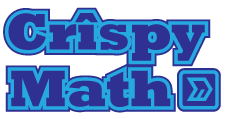Shining Eyes
/Today Daniel was ranting about teacher's who blame the students using the banned word they
“They don’t do their homework”
“They don’t take notes”
I remember my first principal Mark Roth saying some similar lines at one of my first ever faculty meetings. He continued to say he never wanted to hear his teachers saying «they» when talking about students, it implied we weren't in this school thing together, and that the students were somehow separate and distant. We were making the students they who we would talk about instead of talk with. We would use words like we or us instead. This stuck with me.
Daniel goes on
This is one of the reasons teaching stresses me out – because if my students are messing up, 99% of the time it’s my fault. Management issues? I need to add more structure. Comprehension issues? I need to tighten up my lessons. Retention issues? I need to change my assessment strategies. There are very few things that I can’t tie back to something that I can change about my classroom.
Indeed. It's why I can't sleep at night when class goes badly, like this past Thursday. And when I tell people this they think I am crazy. Seth Godin talks about how the leader is the one responsible for the success of the pupils a lot in Tribes*, but since my book is nowhere to be found I can't quote it.
There is another great example though. In his most awesomest of TED talks Ben Zander speaks about connecting with his students and knowing he is successful by looking for their shining eyes. You can't go wrong with this one.
*Amazon links are affiliate links.











